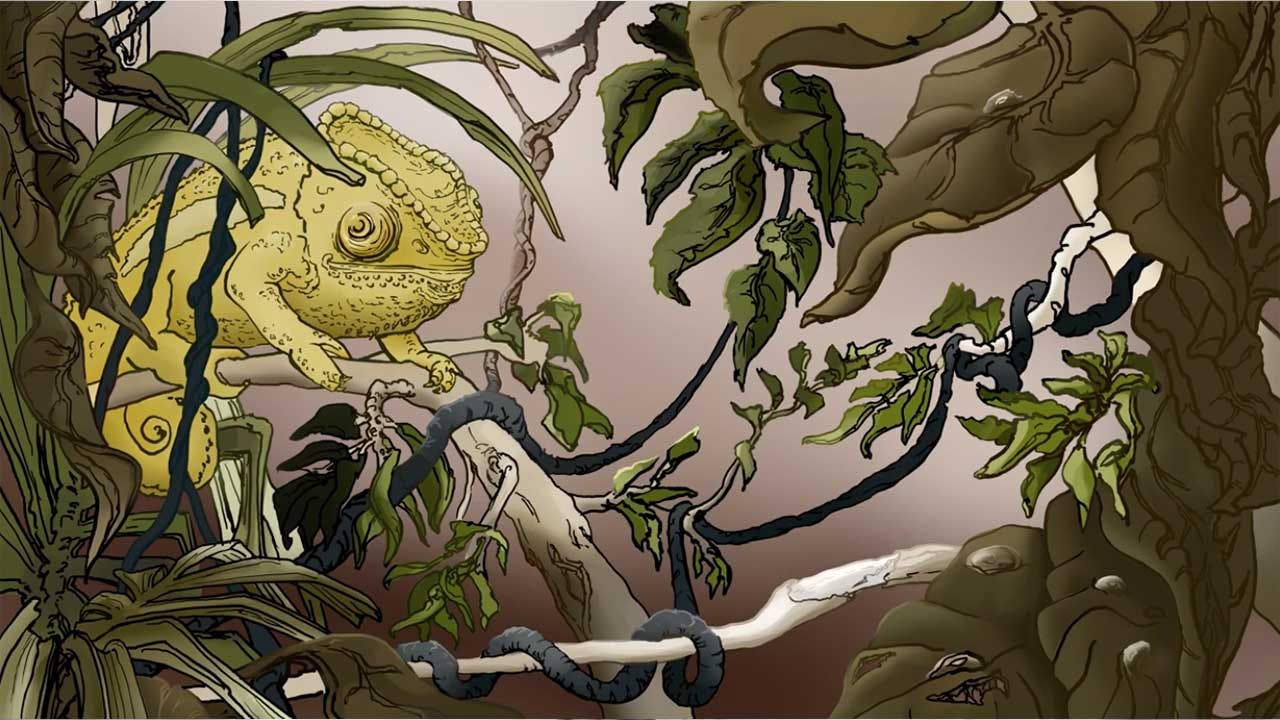These imaginative shorts reveal the power of animation to immerse, amaze and teach audiences of all ages. Using different techniques such as stop motion, claymation, and digital rendering, the filmmakers confront matters of life and death with curiosity and detail, allowing viewers to explore these topics with the same openness.
Despite its reputation for simply being cartoon entertainment, animation has proven to be an insightful and highly technical art form. Here are our top picks:
Maya Hartmeier delves into the science behind chameleon color change with this fascinating short. Her colorful illustrations provide a backdrop for lessons in physics, chemistry, and biology, all of which help to explain Bob’s unique “talent.”
With its “zine-like” appearance, Cindy Lo’s visual interpretation of the Big Bang theory is quite fitting. Without taking itself too seriously, the video reminds us of the many cosmic questions that are yet to be answered. goofy illustrations and a deadpan French narrator guide us through the “Genesis” story, all the while proving that science is fun.

Watch COLORCONDITION on Labocine
The multi-media collages and jittery animation of Samantha Moore’s film reveal the exciting, yet stressful world of raising twins. Hand-drawn sketches come to life, along with home video footage, ink sketches, and crayon drawings on lined paper. She seems to embrace the clutter, allowing it to take shape and tell intimate stories of parenthood and human development.
Rose Stark’s morbid tale centers on a hungry parasite who narrates her devious efforts to feed on humans. The film’s muted illustrations immerse us in her wet, infected world as she as she spreads from one person to another without remorse.
“Move depicts the surreal dream life of a young comatose man, and how it attempts to guide him to consciousness.” While the outer and inner worlds are contrasted with live-action vs. animation styles, this distinction becomes increasingly unclear as his condition changes.
“Simulados is the story of a hunter-gatherer from 12000 years ago trying to survive in one of the most extreme climates in the world. In this journey...computer simulations help us understand the workings of our societies, and how they might help us face the consequences of complex challenges such as climate change.”
Sam Molleur’s touching stop-motion film tackles the sometimes-difficult balance of emotion and science as a dying physicist looks back at his life. He ponders personal memories, physics concepts, and his place in the universe as he descends into a darker and darker hole. Even for this scientist, the human experience and fear of death are unavoidable.
Despite the hype about eco-fuel, director Julie Bezerra Madsen points out that some alternative energy sources have hidden consequences.
Perttu Inkilä, Velda Parkkinen, and Liis Mehine revisit the 1961 myth using vibrant imagery and archival recordings. As legend has it, “Italian amateur radio operators record the voice of an unknown female cosmonaut re-entering the Earth's atmosphere in a malfunctioning spacecraft of the Soviet Vostok program. According to Soviet officials, this never happened. If it did, she was the first woman in space.”
“This animation shows the 2299 high-quality (multiple transits), non-circumbinary transiting planet candidates found by NASA's Kepler mission so far. These candidates were detected around 1770 unique stars, but are animated in orbit around a single star. They are drawn to scale with accurate radii, orbital periods, and orbital distances.”